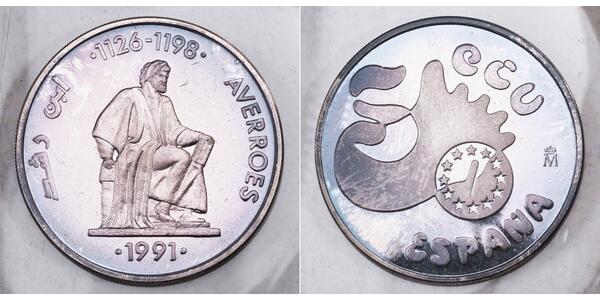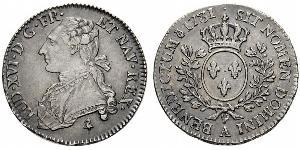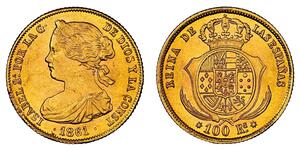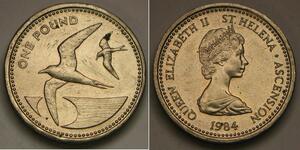5 Ecu (Vendida por $20.0)
1991, Spain. Beautiufl Large Proof Silver 5 Ecu "Averroes" Coin. X#M31. 33.62gm!
Mint Year: 1991
Mint Place: Madrid
References: KM-X#M31.
Condition: A decently toned, otherwise spottless proof coin!
Denomination: 5 Ecu - Averroes (Arab-Andalusian polymath and philosopher).
Material: Silver (925)
Weight: 33.62gm
Diameter: 42mm
The European Currency Unit (₠ or ECU) was a basket of the currencies of the European Community member states, used as the unit of account of the European Community before being replaced by the euro on 1 January 1999, at parity. The ECU itself replaced the European Unit of Account, also at parity, on 13 March 1979. The European Exchange Rate Mechanism attempted to minimize fluctuations between member state currencies and the ECU. The ECU was also used in some international financial transactions, where its advantage was that securities denominated in ECUs provided investors with the opportunity for foreign diversification without reliance on the currency of a single country.
The ECU was conceived on 13 March 1979 as an internal accounting unit. It had the ISO 4217 currency code XEU.
On 1 January 1999, the euro (with the code EUR and symbol €) replaced the ECU, at the value €1 = 1 ECU. Unlike the ECU, the euro is a real currency, although not all member states participate (for details on euro membership see Eurozone). Two of the countries in the ECU basket of currencies, UK and Denmark, did not join the eurozone, and a third, Greece, joined late. On the other hand, Finland and Austria joined the Eurozone from the beginning although their currencies were not part of the ECU basket (since they had joined the EU in 1995, two years after the ECU composition was "frozen").
Due to the ECU being used in some international financial transactions, there was a concern that foreign courts might not recognize the euro as the legal successor to the ECU. This was unlikely to be a problem, since it is a generally accepted principle of private international law that states determine their currencies, and that therefore states would accept the European Union legislation to that effect. However, for abundant caution, several foreign jurisdictions adopted legislation to ensure a smooth transition. Of particular importance, the USA states of Illinois and New York adopted legislation to ensure a large proportion of international financial contracts recognized the euro as the successor of the ECU.
Ibn Rushd (Arabic: ابن رشد, 14 April 1126 – 11 December 1198), often Latinized as Averroes (English: /əˈvɛroʊiːz/), was an Arab Andalusian polymath and jurist who wrote about many subjects, including philosophy, theology, medicine, astronomy, physics, psychology, mathematics, Islamic jurisprudence and law, and linguistics. The author of more than 100 books and treatises, his philosophical works include numerous commentaries on Aristotle, for which he was known in the Western world as The Commentator and Father of Rationalism.
His legacy in the Islamic world was modest for geographical and intellectual reasons. In the West, Averroes was known for his extensive commentaries on Aristotle, many of which were translated into Latin and Hebrew. The translations of his work reawakened western European interest in Aristotle and Greek thinkers, an area of study that had been widely abandoned after the fall of the Western Roman Empire. His thoughts generated controversies in Latin Christendom and triggered a philosophical movement called Averroism based on his writings. His unity of the intellect thesis, proposing that all humans share the same intellect, became one of the best-known and most controversial Averroist doctrines in the West. His works were condemned by the Catholic Church in 1270 and 1277. Although weakened by condemnations and sustained critique from Thomas Aquinas, Latin Averroism continued to attract followers up to the sixteenth century.

|
Publicado por:
anonymous 2024-01-10 |
|
||
|
||
|
||
|
||
1 Pound Isla Ascensión / Santa Helena (1981 - ) Plata Isabel ...
grupo tiene 5 monedas / 2 precios
⇑




 English
English




-300-150-KtDBwcI0XgEAAAEoWKP7lK.O.jpg)







